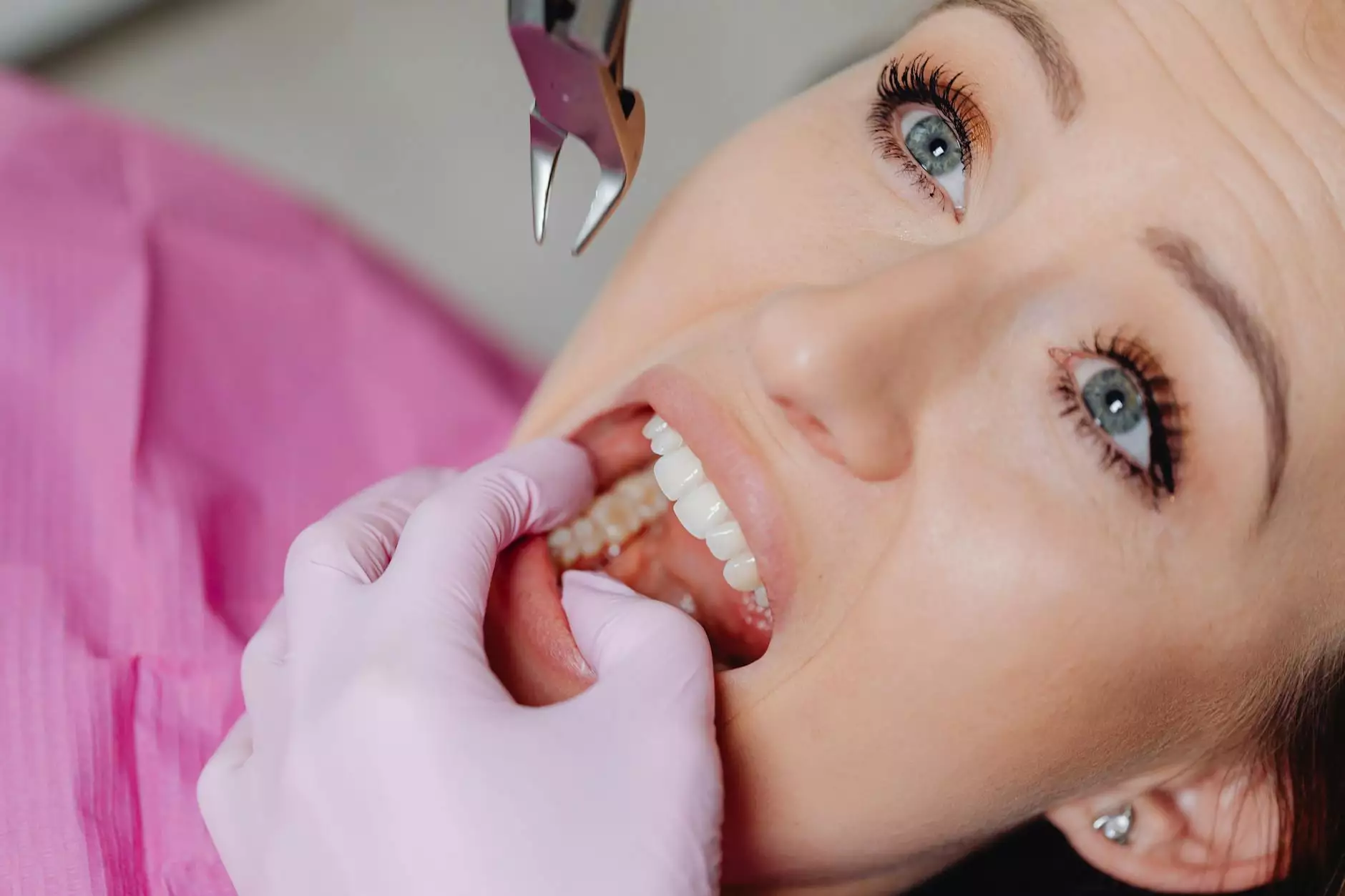Understanding Tooth Removal: A Comprehensive Guide

In the realm of general dentistry, one of the most common procedures is tooth removal. Whether it's due to decay, overcrowding, or other complications, understanding the reasons for and the process of tooth extraction is essential. In this extensive guide, we aim to provide valuable insights into tooth removal, ensuring that you feel informed and empowered regarding your dental health.
Why is Tooth Removal Necessary?
There are various reasons why a tooth may need to be removed. Some of the most common reasons include:
- Severe Tooth Decay: When a tooth is extensively decayed, it may be beyond repair, necessitating extraction.
- Overcrowding: In cases where there is insufficient space in the jaw, teeth may need to be removed to facilitate proper alignment, especially before orthodontic treatment.
- Gum Disease: Advanced gum disease can lead to the loosening of teeth, and extraction may be necessary to prevent further complications.
- Impacted Teeth: Wisdom teeth often become impacted, causing pain and potential infection, making removal necessary.
The Tooth Removal Process
Understanding the tooth removal procedure can alleviate anxiety for many patients. Here’s a breakdown of what to expect:
Pre-Extraction Consultation
Before any surgical procedure, a thorough consultation is conducted. The dentist will:
- Perform a detailed examination of your teeth and gums.
- Take X-rays to assess the condition of the tooth and surrounding structures.
- Discuss your medical history, including any medications you're taking.
Numbing the Area
After the consultation, local anesthesia is administered to numb the area surrounding the tooth to ensure you experience minimal discomfort during the procedure. For those who are anxious, sedation options such as nitrous oxide (laughing gas) or oral sedatives may also be provided.
The Extraction Procedure
Tooth removal can be categorized into two types:
- Simple Extraction: This is performed on teeth that are visible above the gum line. The dentist will use elevators and forceps to carefully loosen and remove the tooth.
- Surgical Extraction: This is required for teeth that are impacted or not fully erupted. The dentist will make an incision in the gum to access the tooth and may remove some bone if necessary.
Post-Extraction Care
Following the extraction, proper care is crucial for healing:
- Control Bleeding: Bite down on a gauze pad for about 30 minutes to control bleeding.
- Pain Management: Use over-the-counter pain relief medications as advised by your dentist to manage discomfort.
- Follow Dietary Restrictions: Stick to soft foods and avoid using straws to minimize the risk of dislodging the blood clot.
- Attend Follow-Up Visits: Ensure to visit your dentist for any follow-up appointments to monitor the healing process.
Potential Risks and Complications
While tooth removal is generally safe, there are potential risks involved:
- Infection: As with any surgical procedure, there's a risk of infection. Following your dentist’s care instructions can mitigate this risk.
- Dry Socket: This painful condition can occur if the blood clot at the extraction site dislodges. It's essential to follow aftercare instructions to prevent this.
- Damage to Adjacent Teeth: Procedures must be performed carefully as there’s a small risk of affecting neighboring teeth.
The Impact of Tooth Removal on Oral Health
While tooth removal might sound daunting, it’s important to appreciate its role in maintaining overall oral health. Here are some key points to consider:
- Preventing Further Decay: Removing a badly decayed tooth can prevent the spread of infection and decay to surrounding teeth.
- Improved Alignment: For patients undergoing orthodontic procedures, tooth extraction can create space for proper alignment and improve functionality.
- Promoting Gum Health: Removing teeth affected by gum disease can facilitate better gum health and overall oral hygiene.
Alternatives to Tooth Removal
In some cases, extraction may not be the only solution. Here are some alternatives that might be considered:
- Root Canal Therapy: If a tooth is salvageable, root canal treatment can remove infected tissue while preserving the tooth.
- Dental Crowns: For weakened teeth, a crown can restore function and aesthetics while avoiding extraction.
- Orthodontic Treatments: Sometimes, braces or other orthodontic devices can create space without the need for extraction.
Choosing the Right Dental Professional
When it comes to tooth removal, choosing a qualified dental professional is imperative. At Teeth At Tiong Bahru, our team of skilled dentists is dedicated to providing comprehensive dental care, ensuring that each patient has a safe, comfortable, and efficient experience during tooth extraction.
Conclusion
In conclusion, tooth removal is a common and often necessary procedure that plays a crucial role in maintaining overall oral health. Whether it's to eliminate pain, prevent further complications, or prepare for orthodontics, understanding the process can help alleviate concern and facilitate better communication with your dental care provider.
At Teeth At Tiong Bahru, we are committed to ensuring that our patients are fully informed and comfortable throughout their dental journey. If you have any concerns about tooth extraction or other dental procedures, don’t hesitate to reach out and consult with our expert team today.



